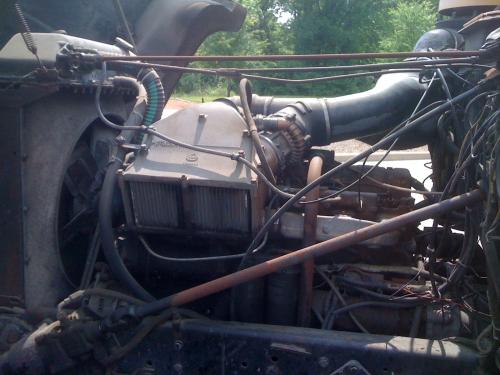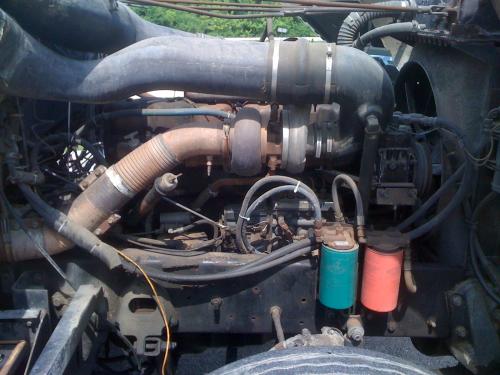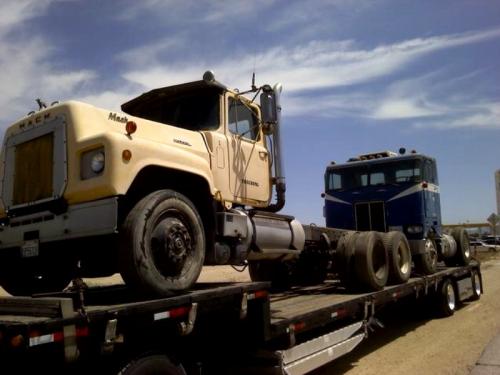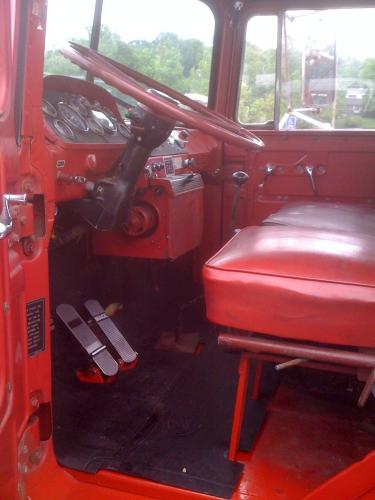-
Posts
276 -
Joined
-
Last visited
-
Days Won
2
Content Type
Profiles
Forums
Gallery
Events
Blogs
BMT Wiki
Collections
Store
Everything posted by convoyduel
-
I had a huge aluminum air starter air tank on a '90 CH613 I sold a while back. It was mounted under the driver's side cab, about the size of what you are talking about. Have someone at Mack look up CH613 with the last six of 007999.
-
I'm gettin' close to starting my own department. I'm just kind of stunned at how cheap these are. A small fire department by our farm bought the 70/88 CF that was listed on here. I can't buy a used engine for these prices.
-
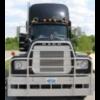
Double Clutch Magazine
convoyduel replied to phildirt's topic in Antique and Classic Mack Trucks General Discussion
That was my experience a few years ago with them. No hard feelings, I'm sure they are a very good group of people who mean well. Seemed like a very east coast group, not much incentive for a midwesterner like me or Rob. I do wish them well nonetheless. Hope my experience was the exception to the rule. -
I just bought this '78 CF685 100' Thibault mid mount Aerial out of mid PA. Can anyone by chance tell me the history of this particular truck? Thanks in advance. Dan
-
You'd be trouble and money ahead to just start with a Superliner and update the engine if that's your goal. If nothing else, find a recent RD and start there so at least you've got the cab mounts and everything that you are just moving back on the frame.
-
While at the local Mack dealer today, one of my buddies behind the counter (that usually groan when I walk in) told me that Mack is updating the system and that any chassis info before 1980 or 81 or so would no longer be searchable. He said they were supposed to get a CD with the older truck info on it. If anyone has any more information, please chime in. I'd like to get a copy of the CD myself just in case. I can't see anyone finding it in 5 years.
-
The easier way is to open the door and look on the side of the door just behind the handle. There is a little piece of metal about an inch tall the slides out. You'll have to use a pliers or small screwdriver to push it forward and pull out. When it slides out about an inch or so, the whole cylinder assembly will be free to pull out from the outside door skin. The cylinder will be attached to a 1/4" square peg that's about 3 or 4 inches long. That metal tab you pulled out from the side of the door will be free, too. To reinstall, be sure that the metal tab is flush against the inside of the outer door skin when you reinsert the new lock. It will take a bit of wiggling to get the 1/4" peg back into the mechanism. It's just a luck thing and may slip right in or it may take some wiggling. I find it helps if you keep a key in the cylinder when reinstalling. I think both doors and the ignition cylinder kits are around $35 with 2 keys. If the truck is old, you may want to pick up a couple of those metal slides that hold the door cylinders in as well. I hope you understand what I'm trying to describe. It should be a bit more clear when you actually see it in person.
-
I'd take a good look at the rules and regs if I were you before you miss something. Cargo Insurance filings are required for Common Carrier Authority. There is a process to have it waived for something like gravel haulers or dirt dobbers, but it is rather complicated. Also, be sure your quotes include MC filings. Most carriers are now also rating insurance on company and personal credit history. I don't know nor do I want to know anyone's personal situation, but that will affect why 2 people or companies with the same age trucks and type of operation differently. Sounds like you're getting a better quote now.
-
The IFTA exemption was pursued feverishly by the ATHS. I helped some with their push at the IFTA convention in St. Louis in 2007. The bottom line is while most IFTA jurisdictions were agreeable to the exemption, some of those in agreement felt the exemption was unnecessary due to existing language that they felt made it clear that antique or historic licensed vehicles did not apply. There were some jurisdictions, including I believe all of the Canadian provinces, that felt that antiques should NOT be exempt either out of principle or due to their feelings that the potential for abuse was too high. Either way, it has been pursued and failed multiple times. Missouri DOT has been working closely the ATHS to sponsor the exemption (has to be sponsored by a member agency). I have worked with MoDOT over the past few years looking for a way to make this easier to get through. One option was to create an Approtioned Historic Exempt plate through IRP out of your base jurisdiction. The theory would be that the Approtioned Historic Exempt plate would be recognized by all IRP agencies and would once and for all establish a unique class of vehicle registration that allowed pulling trailers for hobby use. The problem is that it would likely require a nominal annual registration fee (well less than $100) and I know too many who would balk at that and rather take their chances. At the invitation and request of MoDOT, We have shown the Rubber Duck truck at several of the IRP and IFTA events over the past few years trying to build some positive PR for the hobby and help demonstrate that these vehicles are out there and very much in a grey area. We have received very positive feedback, including at the annual IRP convention here in St. Louis this past May. In my opinion, I believe until there is some defined uniform registration like an Apportioned Historic Exempt plate, it will always be a crap shoot when traveling to shows across state lines.
-
Nice write-up. I would add a section about IFTA as it is a fuel tax/road use tracking quasi-government entity that often becomes an issue at the port of entry. Many states say that IFTA is not required of a historic-registered vehicle while other states insist collector trucks have IFTA or 72 hour fuel tax permits which can be very expensive. Even at the IFTA convention, there is polarized disagreement. Like the scale houses, I find it easier to have IFTA than not have it. I have an account in my personal name through Missouri and it stops all debate. Some argue it concedes commercial operation, but once again, which argument do you want to have on the side of the road? The other issue is that all of a sudden, out of the blue, I have Hagerty asking me for pictures of my insured truck inside of my storage building. They are now saying they only write retired commercial truck insurance for garage-kept trucks. Is anyone else having an issue?
-
Went and looked for any kind of wire today...no dice. There's no switch in the cab, no wire off of the fuel pump. I started it up for giggles and it ran just fine. I'm very confused. One other note, this engine is governed at 1800. Is that normal for the ETAZ?
-
The dynatard is basically the same as a jacobs engine brake, isn't it? I didn't see any switch in the cab for a dynatard, but i'm not 100% sure what to look for. It acted very much like an engine bucking and fighting a jake brake. The tapping I heard all along sounded more like a valve adjustment on a cylinder, but I haven't pulled anything to even start to look.
-
Superdog, The truck originally had the RT1110 and 3.89's on 34 Camelback. It now has a Fuller 13 and 3.55 Rockwell on Pete air ride. The holes are all still there for the camelback, so we're going to roll a set back under eventually. I found agkits but I didn't see the ETAZ673 on any of the parts lists. As the engine S/N shows its the original engine, I don't want to swap, I want to rebuild. LMack, Yes, the engine is very tired. When started it yesterday, it ran for a short while then started bucking, popping and shaking the truck, throwing a lot of white smoke out the pipes. I've never heard anything like it myself other than to say it almost acted like an old mechanical engine with the jake on at idle. When it was running, it seemed like there was a noisy valve or rod, but these old Mack engines are hard to tell which knock is normal and which is not.
-
Looking like I will be into a rebuild of my ETAZ673. What is a good source for reasonably priced overhaul kits? Also, are there any tricks to the ETAZ673? This is my first.
-

Adding A Dual Line To My Wet Kit
convoyduel replied to Deere Mack's topic in Modern Mack Truck General Discussion
The 2 line system is a loop. With the pony motor, there is a low pressure suction from a hydraulic reservoir to the pony pump and then a high pressure from the pump to the system. You need a T on both the low and high pressure lines. Easiest place should be near the pony pump. Put 90 degree shut offs on both inputs to the T, allowing you to choose from the trailer reservoir and pony pump or the tractor reservoir and pump. For the tractor, you'll just need to run a return line to your tractor reservoir. A single line wet kit feeds relief pressure back through the single line at the pump. After you add your return line on the tractor, putting the PTO on and the valve in the "raise" position, you'll have continuous high pressure flow to the trailer system. -

Mc Authority Question
convoyduel replied to jeffl1107's topic in Modern Mack Truck General Discussion
New Jersey has nothing to do with getting interstate authority, just the plates. You would need Interstate authority to haul across state lines and you will need Intrastate authority for individual states to haul point-to-point within any individual state unless you operate wholly within the commercial zone of each state. I pray for you that you will not have to seek intrastate authority in multiple states. That process is still pretty painful. Interstate authority is easy enough to get, however it will significantly increase your insurance due to the filing requirements on the part of the insurance company. Progressive, for example, increases rates something like 40% if you have ICC filings. You will also have to have a cargo insurance policy in effect to get your ICC authority, so that's likely another $1000 per year just for that. You will also have to register with a Process Agent for around $300 one time. After you get your cargo, liability and process agent paperwork filed, then your company name is printed in the Federal Register. Once that happens and no one objects (no one does), you're authority will become active. By the way, choose Common Carrier Authority. You don't want Contract Carrier Authority. The Authority filing is around $300 itself. You will need an IFTA account and have to submit quarterly fuel use reports to IFTA. IFTA is basically no-cost up front, but you will have to keep track of every mile driven by state and route as well as every gallon purchased. No exceptions. You will also have an IRP account when you get your Apportioned plates. As a first time registrant, you will have to identify which states you want and estimate your total mileage for each state. Each year thereafter, your fees will be prorated based on your actual miles ran. Figure around $2000 for an annual Approtioned plate, but it is just based off of percentages of each desired state's plate fees prorated according to your annual mileage splits. IFTA and IRP are usually handled by the same folks at the state level, although a few states are still antiquated. I'm not sure how NJ is. Missouri is a 1-Stop shopping Enhanced CVISN state so everything is available online and it's a heck of a lot simpler. You will also have to go through the new UCR process. AND, not to be left out, regardless of any of the rest of this, you will need to register and get a USDOT number first and foremost. Everything else will tie back to that USDOT number. I'm not sure how NJ is, but in MO, if you have Common Carrier Interstate Authority, your truck purchase is tax exempt. That saves a boat load of money, but your authority has to be in-effect when you title it. They check online when you're in the office to make sure it is in effect at that moment and not pending or suspended. All of this should be in the name of your LLC. You as a driver are irrelevant in this process, other than rating your insurance based on your driving record and credit history. The truck does not have to be "owned" by the LLC, but it has to be "leased" to the entity holding the authority certificate. All insurance policies should be in the name of the LLC and name you and your wife individually as "Additional Insureds" As for the "other drivers", they are 100% wrong. They might squeek by with just having apportioned plates, but if they are not leased to a company that has authority, they will get zapped pretty hard. When you register for a USDOT number, you get on the radar screen. An audit can occur of operations based on that USDOT number, although audits usually are more common for carriers with authority filings. The state DOT folks will also audit, especially if they get wind of an illegal operation. When they do audit, if they find you are operating without authority where it is required, you will get shut down immediately and slapped with mind numbing fines. A local dump trucker who ran the southwest metro area like us (bigen might remember him) ran into this in St. Louis back in 2000 and again in 2002. He ran outside of the law for years. They finally shut him down and laid some hefty fines on him. He sold his Macks and I don't think anyone heard from him after that. -
It wasn't me. I was going to bid high, but not that high.
-

Picked Up The New Rs712Lst
convoyduel replied to convoyduel's topic in Antique and Classic Mack Trucks General Discussion
My wife's a cop, so the gun and handcuffs put me at a slightly bigger disadvantage than most of the rest on here. -
My friend Paul Sagehorn has picked up my 2 latest purchases in California and is bringing them back to St. Louis. Thought I'd post a pic of the pair. One probably isn't of much interest to the board, but the other has a very significant history. My wife said I'm done buying trucks even I find a truck that someone claimed hauled Jesus Christ himself to Nazareth.
-
Well, I'm making progress, I suppose. I replaced the ignition coil, cap and rotor. NAPA's coil is an IC64 in case anyone needs the info. It's basically just a simple coil that does not require an external resistor. It also uses a more standard wire, not the screw-down type on the original coils. The kid behind the counter was going to send me packing because the Mack R608F nor anything else with a 707 wasn't in his computer by year, make and model. After I badgered him enough to pull the paper books and look, he found exactly what he needed. Not a big deal, just annoying. After it ran for a few minutes, it died again. Confirmed fuel to the carb. Pouring fuel down the intake tube into the carb got it to run again but poorly. I finally decided to take the carb off and pull it apart. It's pretty decent inside, but looks like the orifices may have some gunk. The top end with the float looks new and the trottle body does as well. I dropped it off at a local carb shop. After they picked themselves up off the floor from shock (hadn't seen anything this big and obnoxious), they pulled some old books and found a rebuild kit. They say $300 for round numbers and it should be rebuilt. I'll have to see what the results are next week after I get it back.
-
Well the truck has started and run well until this week. The tires are shot so it hasn't been off of the property at the Museum of Transportation. My running around has been on the parking lots and service roads. This week, after running about 3 or 4 minutes, I went to drive it up to the top of the museum, got out on the county road in front and pulling a steep but short grade is when it quit just before the top driveway. That's when I put more gas in it (after about 15 minutes of piddling) and it restarted for around 30 seconds. After we got it back into the lower parking area, we let it sit and that's when I started tackling the fuel system. This truck has 2 rear fuel pumps it appears - one above the rear axle and one right near the midship driveline brake behind the Waterous pump. Both take a large secondary fuel filter. I replaced the 5 stratoflex style 5/16 inch lines running between the 2 pumps and filter housings, everything else from teh tank up to the front is copper. It looked like the rear most filter was quite a bit older than the midship filter, almost like someone forgot there were two. At the front, I replaced the 2 stratoflex lines that run from the frame over to the block area. I'm not sure what the circular assembly is that one runs to that comes out of the lower mid block on the driver's side. Just past it is a small fuel bowl filter. I've replaced the element in it as well. Everytime this has stalled, there is always pressure in the filter bowl when you loosen the bottom nut to check the bowl. When the engine was running I always had it on L-R. It ran on both L and R, although there was a few misses when it ran on only one or the other. The last time I ran it on one side was before the thing started dying. Both times it crapped out on me, it was when I got heavy in the pedal. After I replaced the fuel lines and all 3 filters (took a day or so), it started up and ran like a top for 3 or 4 minutes. When I started getting more confident and running it harder around the lot, that's when it died again. I haven't been back to try and cold start it again. I did remove the right side coil and brought it to my Car Quest guru. I got a big GM style coil and was going to try it to see what I have for luck. Caps and rotors are new and perfect. Wires are older so that's another step. Will the regular automotive coils work or will they burn out quickly? I'd rather go with the $20 coils new than spend big bucks on something old that is just as bad as what I started with.
-
My R608F is coming along nicely. We replaced the floor panels, mat, pedals and broken glass. Running it around the other day, it died like it was out of gas (although I had just put in 26 gallons and hadn't run it much more than 3 or 4 minutes at a time a couple of times since). I got if off the road, put a few gallons in and it started up fine. About 30 seconds later it died. I replaced the stratoflex fuel lines to both large secondary filters by the rear axle and the small paper filter in the bowl on the engine. When I fired it up, it ran like a top but after 3 or 4 minutes, it died again. I checked the filters and all are good and clean. When I loosen the screw on the bottom of the bowl, I get pressurized fuel from the top of the filter cup. I haven't had a second person around to spin the engine while I check for spark. I was wondering what the collective experience would be with reliability of the coils or symptoms of a bad coil. The caps and rotors are excellent. Wires are good. I find it hard to believe with dual ignition that both coils are bad at once but then again strange things happen. If it is the coil, does anyone know where I can get them? They are big Delco Remy coils with built in cooling fins. Go easy on me, this is my first big gasser.
-
How are your horns operated? Are they lanyard pull or are they electrically operated air?
-

Federal Q Siren
convoyduel replied to kennylane's topic in Antique and Classic Mack Trucks General Discussion
I'll keep my out for a Q for you if you keep your eye out for a B&M CS8B for my R model pumper.
BigMackTrucks.com
BigMackTrucks.com is a support forum for antique, classic and modern Mack Trucks! The forum is owned and maintained by Watt's Truck Center, Inc. an independent, full service Mack dealer. The forums are not affiliated with Mack Trucks, Inc.
Our Vendors and Advertisers
Thank you for your support!



